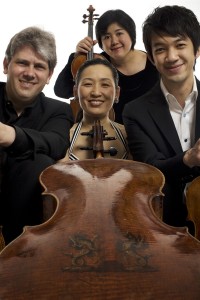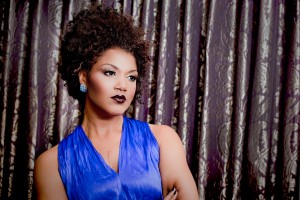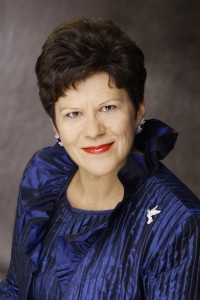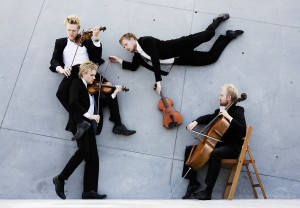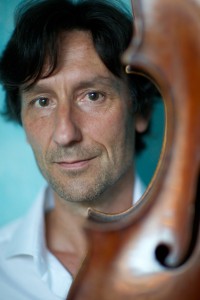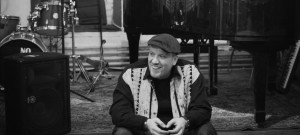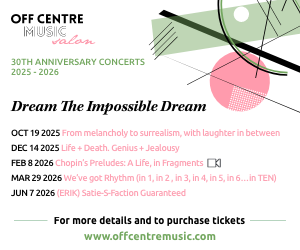The tenth anniversary season of Toronto Summer Music reached a significant climax August 6 with two concerts late in the afternoon and into the evening. Robi Botos and Béla Bartók, two Hungarian-born émigrés to the New World, were appropriate poster boys for the well-conceived and multi-layered 2015 TSM festival just concluded.
Right from the opening concert concentrating on the music of Aaron Copland and George Gershwin, two children of immigrants to the United States, who fused elements of the old and new worlds in their compositions, to the Botos Shuffle Concert tribute to Oscar Peterson and the Borromeo String Quartet's traversal of the complete Bartók string quartets (in the course of one transformational evening), TSM more than met their conceptual theme of “The New World.”
With its extensive schedule built around a foundation of TSM Academy fellows and mentors, the concerts, masterclasses, lectures, films and open rehearsals flowed organically, buttressed by a number of additional concerts featuring special guests such as soprano Measha Brueggergosman, pianists Garrick Ohlsson, Ingrid Fliter and Danilo Pérez and the Danish String Quartet. They provided ample evidence for artistic director's Douglas McNabney's contention at the opening concert that TSM provides “a significant contribution to the cultural life of this city in the summer.” Not to mention a significant contribution to the life of the Academy fellows.
The opening concert delivered its superb program – including Copland's Applachian Spring, three Emily Dickinson songs and Clarinet Concerto as well as the 1926 theatre orchestra version of Gershwin's Rhapsody in Blue and two songs from Porgy and Bess – with enthusiasm. TSO associate principal clarinet Yao Guang Zhai brought the many-sided concerto (written for Benny Goodman) to life. His mellow, nicely bent sound was also welcome in Rhapsody in Blue, which featured piano soloist John Novacek's soft-pedalled modernist approach that occasionally sounded like Steve Reich being played in a bar. Appalachian Spring was an ideal opener: nascent, airy, vibrant music that moved from the transparency of the flute and clarinet through the famous Shaker hymn “Simple Gifts” to its rhapsodic conclusion, conducted with great energy and deliberate gestures by Tania Miller. Brueggergosman got deep inside of Summertime. Touching and extraordinarily beautiful.
Finnish lyric soprano Soile Isokoski's masterclass was marked by the singer's warmth towards the eight Academy fellows who participated in the three-and-a-quarter-hour session. “These people have talent,” she said at its conclusion to the scores of onlookers. “You are sure to hear from them in the future.” With each singer, Isokoski focused on opening the mouth, on pronunciation and enunciation; on uncovering the character of each song and discovering the colours inherent therein. “Forte is a colour,” she pointed out after listening to Schubert's Ganymed.
“Bless you Wolf,” she said of the two-page Kornblumen, Op.22, No.1. “Bless you, Isokoski,” I imagined her students repeating.
Cleveland Orchestra principal cellist Mark Kosower's masterclass delved insightfully into three chamber works: Copland's Quartet for Piano and Strings, Shostakovich's String Quartet No.9 and Korngold's Piano Trio Op.1. In his serially serious piano quartet, Kosower noted that Copland reached into the open American landscape in a different way than in his consonant pieces, using a similar style with different content. He pointed out the value of breathing together, being in active dialogue with each other, paying attention to the rests as punctuation and emphasizing other aspects of the piece to get its message across, given the absence of tonality.
Similar wisdom was evident in his analysis of the Shostakovich. He described it as anxious, particularly Russian in character and needing a little weight. “There's no need to get excited to create excitement,” he explained. “It's necessary to be very Zen in the midst of the composer's terrifying writing.” Of the Korngold (written at 13), Kosower stressed the need to be exuberant with a sense of Viennese style and to be conscious of the work's texture. “There are many ways to play fortissimo,” he said. “Not just louder, but with character.”
The youthful Danish String Quartet made its Canadian debut August 4 with a program consisting of the first string quartets of Beethoven, Thomas Adès and Carl Nielsen. Adès' audacious Arcadiana was the unmistable highlight for me. It moved from the evocative opening movement (Veneto notturno), which the quartet played with great clarity, through the vivacious second movement, the precise ensemble playing of the fourth and quietly bent melodies of the fifth, into the echt Britannia of O Albion, in which Adès takes his rightful place with his distinguished forebears Elgar and Vaughan Williams.
The two 17th-century Danish wedding folk songs were a delightful follow-up to the clear nationalism of Neilsen's quartet which featured very accomplished writing and playing, some of which was seemingly rooted in the Danish woods.
The TSM audience's first encounter with the Borromeo String Quartet came on August 5, in Antonio Lysy's “Te Amo Argentina,” a journey through the music of Argentinian composers Ginastera, Piazzolla, Bragato, Schifrin and Golijov personally commissioned and/or selected by Lysy, a cellist, whose violinist father had emigrated to Argentina from Ukraine.
Lysy began the program unaccompanied on a carbon fibre cello with Ginastera's Puneña No.2, evoking a landscape and a musical history of Argentina's north country. But the evening's highlights revolved around the sweet (and bittersweet) sounds of Astor Piazzolla played by the superb Borromeo buttressed by bassist Roberto Occhipinti, pianist Bryan Pezzone and Lysy. Piazzolla's Oblivion, with its heartrending melody and insistent, guttural rhythm stood out, as did first violinist Nicholas Kitchen's graceful and elegant playing.
Earlier that day, Kitchen gave a 90-minute lecture on the Bartók string quartets with the aid of the Guarneri del Gesù violin that previously belonged to his teacher Szymon Goldberg. The lecture was structured around a week Kitchen once spent in Budapest at the Bartók Archives, examining the original manuscripts and seeing the layers of work involved in creating, improving and developing the six quartets that are a cornerstone of the string quartet repertoire.
The lecture began with the opening page of Bartók's transcription for organ of Beethoven's Op.131 string quartet – which the composer wrote out after hearing it for the first time at a concert his mother took him to at the age of 14. Kitchen went on to point out the connection between the first four notes of the Beethoven and Bartók's own Quartet No.1. Fascinating and informative, the lecture served as an added bonus to the Borromeo concert on the following evening.
That concert (over three hours in length with two intermissions) showcased the Borromeo's immaculate ensemble playing – they read the music on computer, which allows them to see all four parts simultaneously, giving them a constant view of the music as a whole (and, as Kitchen had explained the day before, cutting down greatly on arguments among quartet members). Their playing was gripping, passionate, rapt, sublime, intense; the First, Fourth and Fifth in particular.
As for the sold-out Oscar Peterson Tribute Shuffle Concert earlier that day at the Heliconian Hall which was graced by the presence of Peterson family members, Robi Botos' exuberance, matchless technique and warm lyricism in such tunes as Cakewalk, Requiem, Night Train and Take the A Train showed another side of TSM, one we may be seeing more of in future festivals.


